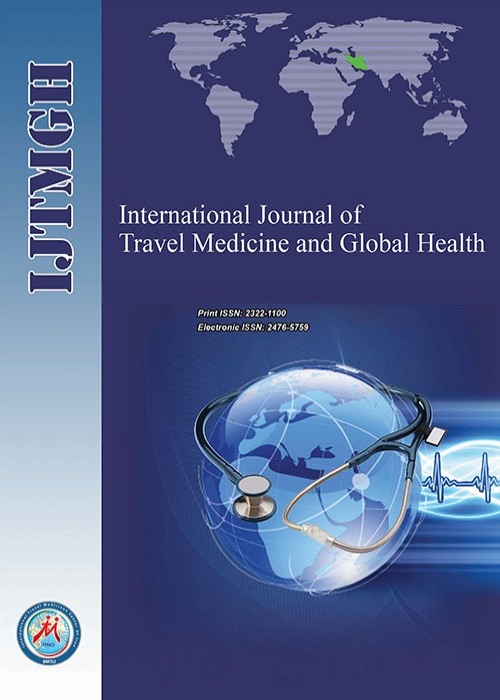Emergency Response of Indian Hajj Medical Mission to Heat Illness Among Indian Pilgrims in Tent-Clinics at Mina and Arafat During Hajj, 2016
Author(s):
Article Type:
Research/Original Article (دارای رتبه معتبر)
Abstract:
Introduction
Extreme heat claims more lives than all other weather-related exposures combined. Hajj rituals at Mina, Arafat, and Muzdalifah involve a minimally-clothed, moving assemblage of 3.5 million pilgrims who are exposed to a harsh, hot, desert climate during physically challenging outdoor rituals and unsheltered night stays, rendering them prone to heat illness, dehydration, and sunburn. This cross-sectional study assessed the emergency response of the Indian Hajj Medical Mission to overwhelming heat illnesses in Mina and Arafat among Indian pilgrims during Hajj, 2016. Methods
In 2016, 88 patients affected by the heat were brought to central tent-clinics at 36 maktabs in Mina and Arafat that were established by the Indian Hajj Medical Mission. Patients were offered rapid external evaporative cooling (wet towels) and cold intravenous saline infusion on patient couches and wheelchairs. Results
The incidence of heat illness among Indian pilgrims in 2016 was 0.62/1000. The ratio of males to females was 1.8:1. Mean ages of males and females were 62.2 ± 7.43 and 52.6 ± 9.3, respectively. Pre-existing conditions, such as diabetes mellitus and hypertension, were present in 93.2% of the patients. The most common presentations included hyperthermia, fatigue, and restlessness. Heatstroke presented in five patients and resulted in one fatality. Twenty-eight patients were referred to Saudi hospitals, and 12 of them were institutionalized. Exertion related to the stoning of Satan ritual during late morning and afternoon hours was the leading cause of heat illness. Conclusion
The overwhelming incidence of heat illness among Indian pilgrims in the critical five-day period of the Hajj represents the tip of the iceberg as the Hajj attracts over 3.5 million pilgrims from 200 countries annually. Heat illness is difficult to manage in the presence of pre-existing comorbidities and mandates clientele education and outreach warning systems to enhance resilience capital amongst Hajj pilgrims, sportspersons, outdoor enthusiasts, and military personnel.Keywords:
Language:
English
Published:
International Journal of Travel Medicine and Global Health, Volume:5 Issue: 4, Autumn 2017
Pages:
135 to 139
magiran.com/p2132684
دانلود و مطالعه متن این مقاله با یکی از روشهای زیر امکان پذیر است:
اشتراک شخصی
با عضویت و پرداخت آنلاین حق اشتراک یکساله به مبلغ 1,390,000ريال میتوانید 70 عنوان مطلب دانلود کنید!
اشتراک سازمانی
به کتابخانه دانشگاه یا محل کار خود پیشنهاد کنید تا اشتراک سازمانی این پایگاه را برای دسترسی نامحدود همه کاربران به متن مطالب تهیه نمایند!
توجه!
- حق عضویت دریافتی صرف حمایت از نشریات عضو و نگهداری، تکمیل و توسعه مگیران میشود.
- پرداخت حق اشتراک و دانلود مقالات اجازه بازنشر آن در سایر رسانههای چاپی و دیجیتال را به کاربر نمیدهد.
دسترسی سراسری کاربران دانشگاه پیام نور!
اعضای هیئت علمی و دانشجویان دانشگاه پیام نور در سراسر کشور، در صورت ثبت نام با ایمیل دانشگاهی، تا پایان فروردین ماه 1403 به مقالات سایت دسترسی خواهند داشت!
In order to view content subscription is required
Personal subscription
Subscribe magiran.com for 70 € euros via PayPal and download 70 articles during a year.
Organization subscription
Please contact us to subscribe your university or library for unlimited access!


